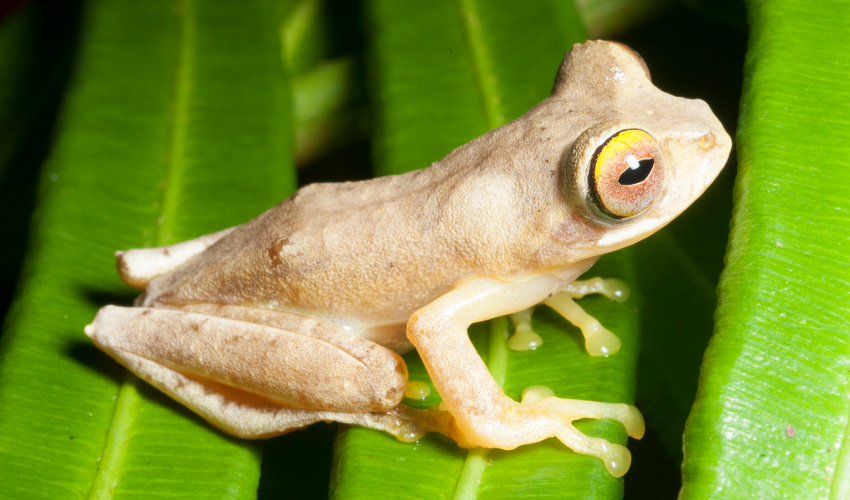Researchers reveal global extent of frog-killing fungus

A Rhacophorus bimaculatus frog, native to the Philippines. Photo credit: Rafe Brown & Jason Fernandez
New genetic test lets SF State biologists and collaborators track an amphibian epidemic
To do scientific detective work, you need the right tools. In a new study coauthored by San Francisco State University biologists, scientists revealed a genetic test that allowed them to draw a worldwide map of a deadly frog fungus in its various forms. That information, along with future discoveries made possible by the new method, may help scientists answer some long-standing mysteries about the amphibian epidemic.
“This is a really important moment that could help us better understand the worst case of a disease in vertebrates in recorded history,” said San Francisco State Professor of Biology Vance Vredenburg, a coauthor of the study.
That disease, caused by the fungus Batrachochytrium dendrobatidis (Bd), has driven hundreds of amphibian species extinct worldwide in recent decades. But the more scientists learn about Bd, the more complicated the story becomes. In some parts of the world, the fungus causes devastation, while in others it coexists peacefully with its hosts. Plus, Bd comes in several different strains, which cause varying degrees of harm.
To understand these perplexing patterns of amphibian die-offs, scientists have been investigating where the fungus comes from and where each of its strains reside. But there was a roadblock. “Previously, in order to get useful data, you needed large amounts of Bd DNA,” Vredenburg explained. “But nearly all of the available samples — skin swabs that are not harmful to collect from frogs — have very small amounts of Bd DNA on them.”
For the current study, scientists borrowed technologies from medical research to create a new genetic test that determines what variant of the fungus a frog has. The new test requires only small snippets of DNA. The international team of collaborators then used the test to analyze 222 fungus samples collected from 24 countries. The samples included skin swabs collected in the field as well as some taken from preserved museum frog specimens, the oldest of which dates to 1984.
The analysis revealed the distribution of the four known Bd lineages around the globe and showed how, in many places, different lineages of the fungus appear to live side-by-side. They also pointed to a form of Bd lurking in Asia — missed by scientists until now — that appears to be the oldest yet discovered. The study was published online in the journal Proceedings of the National Academy of Sciences on Sept. 23.
Key to those discoveries were fungus samples amassed by the Vredenburg lab at SF State. “We have over 50,000 Bd skin swab samples collected around the world,” Vredenburg said. Some, collected by former SF State graduate students Hasan Sulaeman (B.S., '16, M.S., ’19), Heidi Rockney and Raul Figueroa-Valenzuela (M.S., ’13) while doing fieldwork in Southeast Asia, contributed to the discovery of the new strain in the region.
The team continues to search for new clues about Bd — particularly what happens when the ranges of different lineages overlap, as recent lab work has hinted that lineages of the pathogen can mix and become deadlier.
And the genetic methods introduced in the study are likely to have continuing effects on the field, the researchers say: Suddenly, with this new technique, samples sitting in lab drawers worldwide from skin swabs and museum specimens can help scientists make discoveries about the origins and spread of variants of the fungus. “Our paper opens the door to further advances from our labs and many others around the world,” said Vredenburg.
Some materials provided by the University of California, Berkeley